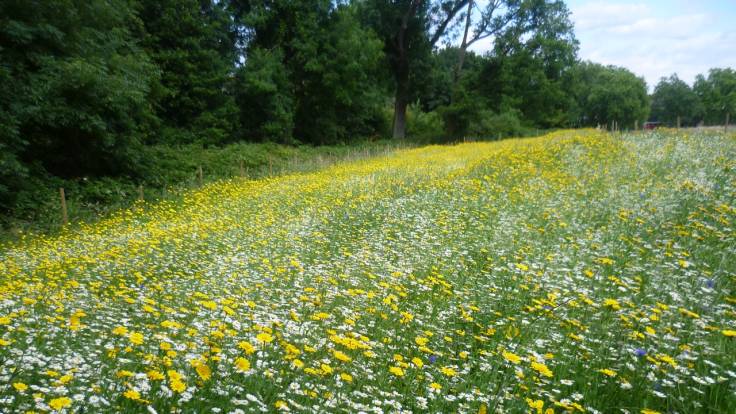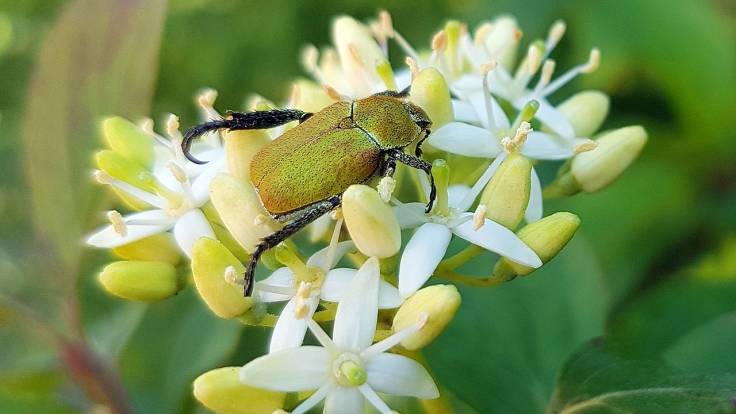Consultation on transforming paddock into low maintenance, wildlife & edible haven
The client wanted a framework for transforming a 1½ acre east-facing paddock into a wildlife haven, with edible crops and also with a more cultivated area including ornamental native wild flowers.
The key requirements were:
- Support diversity of wildlife
- Low maintenance & sustainable
- Optimise aesthetics & screening
I like gardening but I do like to do other things

A wild flower meadow
Because of the size of the paddock, and the requirement for low maintenance, I suggested that only the more cultivated and ornamental area be planted with ground cover, with the rest of the garden divided into 3 ‘wild areas’ and a wild flower meadow.
The three wild areas would be planted with mulched edible tree and shrub crops but the ground cover would be grass, mown on a three-yearly rotation with a wheeled brush cutter.
The wild flower meadow would be surrounded by a hedge, and then have mobile electric fencing for occasional grazing by sheep, the timing of which dependent on the type of wild flowers required.
Native plants
With the emphasis on wildlife diversity, my forest garden motto of “native where possible” holds particularly true.

Hoplia argentea beetle on Bloodtwig Dogwood flowers, photo by Daniel Ballmer
To that end, 6 of the 8 windbreak species I recommended are native, including Alder Buckthorn, Wild Privet and Bloodtwig Dogwood.
The canopy and shrub layers are more focussed on productive species, although there are still natives in the form of Crabapple, Hazel, and Hawthorn.
Features
The diversity of plant species as a foodstuff for native insects is very important. But of equal importance is a diversity of habitats.
- Wildlife pond, a wildlife magnet for any garden
- Dead hedge, great for clearing brash, habitat & shelter
- Native wild flowers
- Thick native hedging
- Wild flower meadow, grazed by sheep
- Grass mown on 3-yearly rotation, range of grass height & maturity
Maintenance
And finally, ensure a budget for maintenance, both in terms of time and money! A forest garden is low-maintenance once established, so it’s critical to keep on top of the weeding for the first couple of years.
